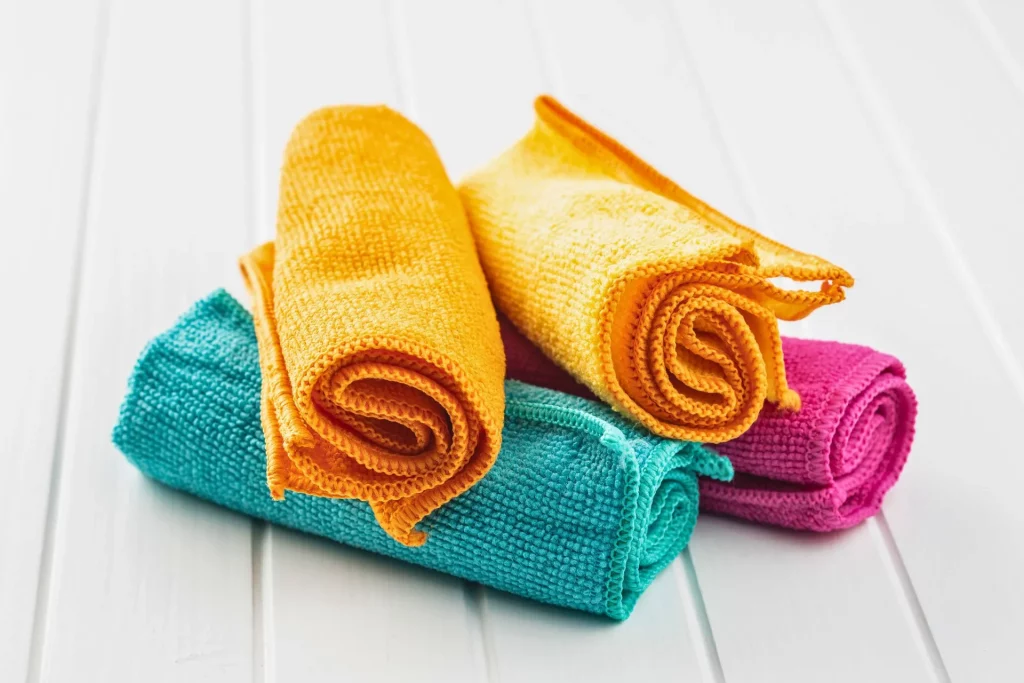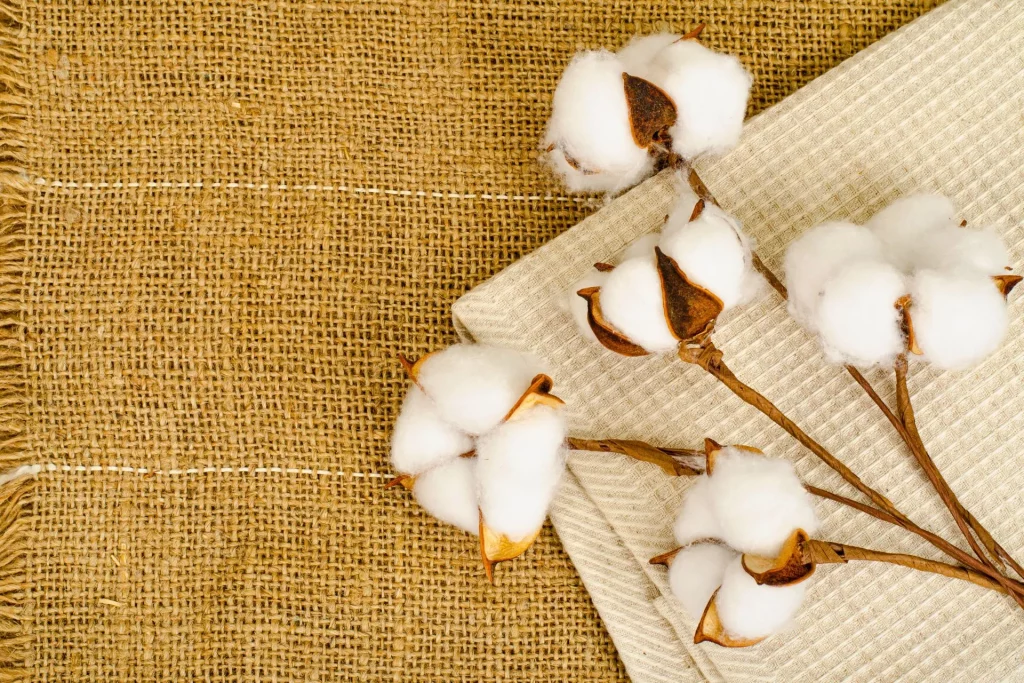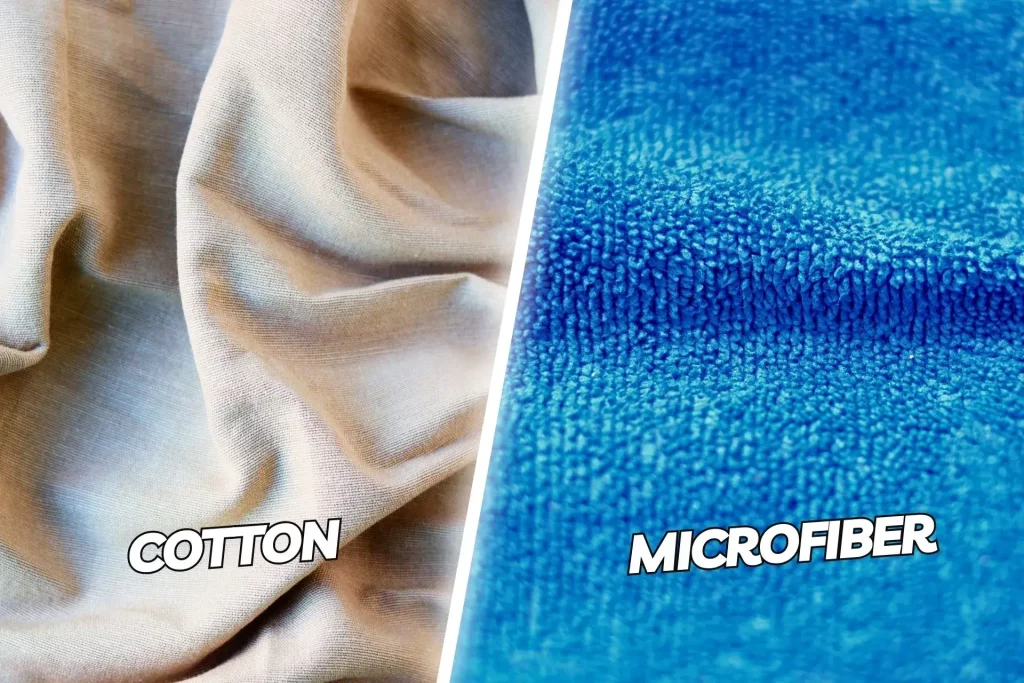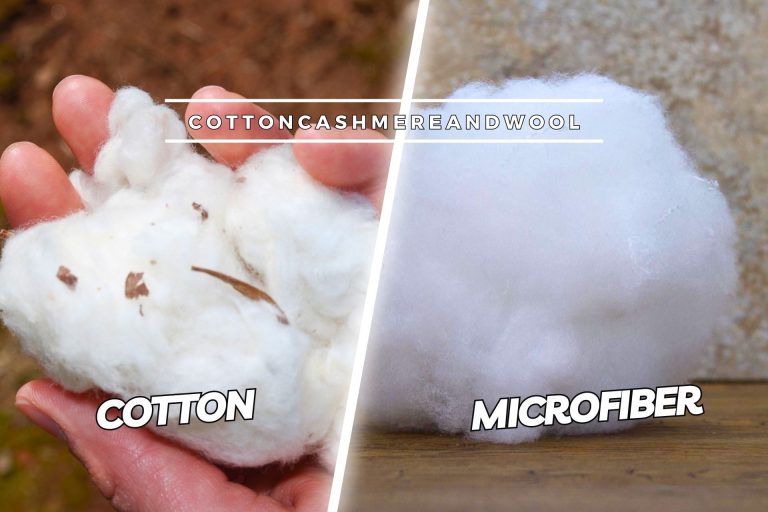When it comes to crafting the ideal sleep haven, few decisions are as critical as selecting the perfect bedding material. In the timeless clash between Cotton and Microfiber, we explore the nuances that can make or break your sleep experience.
Both materials offer their unique promises of comfort, but navigating the sea of options requires insight into their distinctive qualities. Join us on a journey through texture, breathability, and durability as we unravel the threads that bind the classic charm of Cotton with the contemporary allure of Microfiber.
You’ll have the information necessary to make an informed decision by the end of this investigation, guaranteeing that your sleep is nothing less than magnificent.
Table of Contents
Microfiber: The Modern Marvel

Microfiber is a remarkable and innovative fabric composed of ultra-fine synthetic fibers that are typically thinner than human hair. These microscopic fibers are woven or knitted together to create a dense and highly functional material.
Due to their minuscule size, Microfiber fabrics possess a range of unique properties that set them apart from traditional textiles. These properties include exceptional softness, a lightweight feel, and impressive durability.
Moreover, Microfiber fabrics often exhibit remarkable moisture-wicking capabilities, allowing them to efficiently pull moisture away from the body, making them a popular choice for athletic wear and linens. This advanced material has found its way into various industries, from fashion and home textiles to cleaning products and sports equipment, due to its versatility and adaptability to different applications.
In the realm of summer fabrics, cotton holds a prominent place. However, merino wool takes the lead in summer by offering remarkable temperature regulation properties. Take a closer look at what sets merino wool apart from synthetic fibers and the benefits it brings.
Exploring the Characteristics of Microfiber Fabric:
For a good reason, microfiber sheets have gained immense popularity in recent years. These synthetic sheets are crafted from finely woven fibers, typically made from polyester, nylon, or other polymers. Here’s why microfiber sheets have captured the attention of many:
1. Ultra-Soft Texture:
Microfiber sheets are celebrated for their incredibly soft and smooth texture. The fine fibers used in their construction create a fabric that feels luxurious against the skin, offering a cozy and inviting sleeping experience.
2. Wrinkle Resistance:
One of the standout features of microfiber sheets is their wrinkle-resistant nature. Unlike cotton sheets that often require meticulous ironing, microfiber sheets tend to maintain a crisp and neat appearance even after multiple washes.
3. Durability and Longevity:
Microfiber sheets are known for their exceptional durability. Your investment in high-quality bedding will survive for years to come, thanks to the synthetic fibers that make up its makeup.
Care and Maintenance of Microfiber:
Washing: Microfiber may be machine-washed in cold water on a gentle cycle. Fabric softeners should not be used since they might decrease absorbency.
Drying: Tumble dry on low heat or air-dry to prevent excessive wear. High heat should be avoided as it could harm the cloth.
Ironing: Microfiber typically doesn’t require ironing due to its wrinkle-resistant nature. If needed, use low heat and a pressing cloth.
Stains: Blot spills and stains with a clean cloth immediately. When washing, use a gentle detergent and stay away from strong chemicals.
Storage: Store microfiber items in a clean, dry place to prevent dust and dirt buildup. Keep them away from direct sunlight.
Exploring the Pros and Cons of Microfiber:
Benefits of Microfiber:
Drawbacks of Microfiber:
Cotton: Timeless Comfort

Cotton, a staple in the realm of textiles, emerges as a natural wonder from the bolls of the cotton plant, scientifically known as Gossypium. Revered for its timeless charm and unparalleled comfort, cotton fibers are delicately plucked from the plant’s protective capsules, ushering in a journey that transforms them into the fabrics we know and love.
Once harvested, these fibers are spun into yarn, paving the way for a myriad of possibilities. The allure of cotton lies in its intrinsic qualities – a softness that invites touch, a breathability that lets air dance through its threads, and a remarkable absorbency that sips away moisture, keeping us cool and comfortable.
This inherent versatility makes cotton the canvas for fashion’s artistry, the cocoon for restful sleep, and the embrace that defines comfort in our everyday lives. Cotton is an enduring symbol of comfort, style, and simplicity as a fabric that embraces natural goodness.
Exploring the Characteristics of Cotton Fabric:
Cotton sheets have been a staple in bedrooms for generations, and their timeless appeal continues to shine. Natural and breathable, cotton sheets offer a host of benefits that have made them a household favorite:
1. Breathability and Comfort:
Cotton is renowned for its breathability, allowing air to circulate freely through the fabric. This natural ventilation helps regulate body temperature, making cotton sheets an excellent choice for those who tend to sleep hot.
2. Absorbency:
Cotton sheets excel in moisture absorption, wicking away sweat and keeping you dry throughout the night. People with sensitive skin or allergies may particularly appreciate this feature.
3. Classic Aesthetic:
The traditional charm of cotton sheets is hard to overlook. Their slightly textured surface and matte finish lend a classic and inviting look to any bedroom.
If you’ve indulged in the luxury of cotton sheets, especially those crafted from Egyptian cotton, it’s imperative to provide them with extra attention during the washing process. Remember, they demand a more delicate touch, so be certain to cleanse them using approved methods.
Care and Maintenance of Cotton:
Cleaning: Cotton clothing should be machine-washed in cold or lukewarm water to avoid shrinkage. To preserve the integrity of the cloth, use a gentle detergent.
Drying: Tumble dry on low heat or air-dry to prevent excessive shrinking. Remove promptly to minimize wrinkles.
Ironing: Iron on medium heat while the fabric is slightly damp for easier wrinkle removal. Use steam if necessary.
Stains: Treat stains promptly with a stain remover before washing. Bleach should not be used since it may weaken the fibers.
Storage: Store clean, dry cotton items in a cool, dry place. Avoid hanging heavy items to prevent stretching.
Weighing the Pros and Cons of Cotton Fabrics:
Benefits of Cotton:
Drawbacks of Cotton:
Making the Decision: Factors to Consider
When deliberating between cotton and microfiber, several crucial factors come into play, guiding your decision toward the fabric that aligns with your preferences and needs:
1. Comfort and Feel:
Consider your preference for natural comfort and familiar softness (cotton) versus the luxuriously smooth texture of microfiber.
2. Aesthetic and Design:
Decide if you lean towards the classic charm of cotton or the contemporary aesthetic of microfiber, both offering a range of design options.
3. Usage and Application:
Consider the intended use – whether it’s bedding, activewear, or everyday clothing – as both fabrics have unique qualities that suit various applications.
4. Maintenance and Care:
Think about the care routine you’re willing to adopt, as both fabrics require specific washing and drying considerations.
5. Moisture Management:
Assess the importance of moisture-wicking, with microfiber excelling in efficiently drawing sweat away from the body.
6. Budget:
Consider your budget, as cotton and microfiber offer varying price ranges based on quality and usage.
7. Personal Preference:
The choice between cotton and microfiber ultimately comes down to your own preference, values, and way of life. By weighing these factors, you can tailor your choice to match your unique comfort and style needs.
Comparing Cotton vs. Microfiber : Unveiling the Differences

Microfiber and cotton stand as two distinct options in the realm of textiles, each with its own set of qualities and considerations. Delving into their nuances, we uncover a comparative analysis that aids in making an informed choice tailored to your preferences and needs. Let’s explore how these two fabrics stack up against each other:
| Aspect | Cotton | Microfiber |
|---|---|---|
| Origin | Natural fiber derived from the cotton plant | Synthetic fabric made from fine fibers |
| Texture | Soft, natural, and familiar | Soft, often smoother than cotton |
| Breathability | Highly breathable, allows air circulation | Breathable, but might vary |
| Absorbency | High absorbency, wicks moisture away | Very absorbent, efficiently wicks |
| Durability | Durable, though it may wear over time | Durable, tightly woven structure |
| Wrinkle Resistance | Prone to wrinkling, it may require ironing | Generally less prone to wrinkling |
| Environmental Impact | Biodegradable, more eco-friendly | Less biodegradable, synthetic origin |
| Comfort | Natural comfort and a familiar feel | Soft and luxurious, lightweight |
| Allergies | Rare allergies to natural cotton fibers are possible, though not common. | Generally less likely to cause allergies, but some individuals might still experience sensitivities. |
| Applications and Versatility | Widely used in clothing, bedding, towels, and more due to its versatility. | Versatile and suitable for various uses, from activewear to home textiles. |
| Cost | Moderate cost varies with the quality | Generally lower cost than natural |
Cotton vs. Microfiber Sheets: Unveiling the Ultimate Bedding Choice
Choosing between cotton and microfiber sheets ultimately comes down to your personal preferences and needs. Cotton sheets might be your ideal match if you value the familiarity of natural fibers, breathability, and a classic aesthetic.
On the other hand, if you’re drawn to modern luxury, moisture-wicking capabilities, and a sleek appearance, microfiber sheets could be your top choice. Assess factors such as your sleep environment, comfort preferences, and any specific concerns you have, such as allergies or sensitivities.
In the end, both cotton and microfiber sheets have their own merits, catering to different sleep styles and lifestyles. Whichever you choose, investing in high-quality sheets that align with your comfort needs will undoubtedly enhance your sleep experience and contribute to your overall well-being.
Lifespan and Warranty of Cotton and Microfiber:
Cotton and microfiber fabrics’ lifespan and warranty considerations play a pivotal role in making an informed choice. Cotton, a natural fiber, can exhibit varying durability depending on the quality of the fabric and its usage.
While some cotton items may wear out over time, proper care can extend their life. Additionally, the biodegradability of cotton contributes to a reduced environmental impact. Manufacturers may offer warranties based on the fabric’s quality and intended use.
On the other hand, microfiber, with its tightly woven structure and synthetic origin, often boasts higher durability. The fabric’s resilience against wear and tear can contribute to a longer lifespan, making it a reliable choice for those seeking lasting comfort.
As for warranties, microfiber items might come with manufacturer guarantees, reflecting confidence in their durability and performance. However, the synthetic nature of microfiber raises concerns about its long-term environmental impact, highlighting the need for responsible usage and disposal.
Frequently Asked Questions:
Which fabric is more breathable?
Cotton is highly breathable, allowing air circulation, while microfiber offers breathability but might not match cotton’s level.
Which one is better for sensitive skin?
Cotton is a natural option and less likely to cause skin sensitivities compared to microfiber.
Which fabric is more environmentally friendly?
Cotton is biodegradable and more eco-friendly than microfiber, which is synthetic.
Do microfiber sheets wick moisture as well as cotton?
Microfiber excels in moisture-wicking, efficiently drawing sweat away, though cotton is also adept at this.
Which fabric requires special care in washing and drying?
Both require specific care; cotton can shrink if not washed properly, while microfiber should avoid high-heat drying.
Final Thought:
In the tapestry of textile choices, the dichotomy between cotton and microfiber offers a spectrum of comfort and functionality. Whether it’s the natural embrace of cotton’s breathability and timeless appeal or the modern touch of microfiber’s luxurious softness and adaptability, the decision rests on a balance of preferences and practicalities. The choice is a personal one, intertwined with lifestyle, values, and aesthetic inclinations. As we weigh the benefits and drawbacks, let’s remember that beyond the fabric, it is our unique stories that truly make comfort. With cotton and microfiber, we embrace not just fibers but the warmth of our narratives as we embark on restful journeys crafted by our individual choices.

